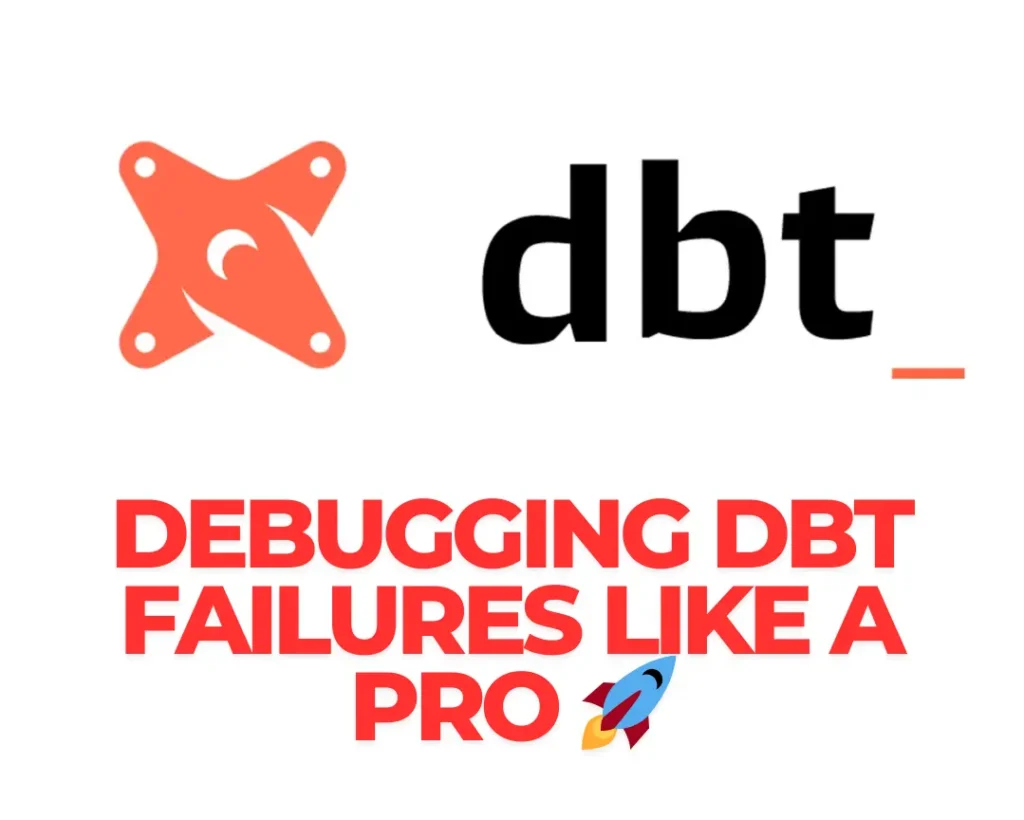The Dreaded dbt Failure – A Data Engineer’s Nightmare

Struggling with dbt failure troubleshooting? Learn how to fix common dbt errors, debug broken models, and prevent pipeline failures with best practices.
It’s 2 AM, and your phone buzzes with an alert: “dbt run failed.” You groggily open Slack, hoping it’s a false alarm. But no—your production pipeline has crashed, and your team is counting on you to fix it before morning. Sound familiar?
If you’ve worked with dbt (data build tool) long enough, you know that failures are inevitable. Whether it’s a misconfigured model, a schema change, or a database issue, production failures can wreak havoc on data teams, leading to delayed reports, missing insights, and unhappy stakeholders.
But fear not! This guide will walk you through dbt failure troubleshooting, covering common errors, debugging techniques, and best practices to prevent issues. By the end of this, you’ll be equipped to tackle dbt failures like a pro.
🧐 Understanding dbt Failures: Why Do They Happen?
dbt failures typically fall into a few categories:
- SQL Errors – Syntax issues, missing tables, or incorrect joins.
- Model Dependency Issues – Broken references, circular dependencies, or missing upstream data.
- Performance Bottlenecks – Long-running queries, memory overflows, or inefficient transformations.
- Configuration Mistakes – Misconfigured profiles, incorrect environment settings, or missing credentials.
- Database Issues – Connectivity problems, table locks, or permissions issues.
Let’s break down each failure type with real-world examples and debugging strategies.
1️⃣ SQL Errors: Debugging Broken Queries
🔥 Common Issue: Syntax Errors
A simple typo can break your entire dbt run. Consider this example:
dbt run
Error message:
syntax error at or near "WHERE"
LINE 5: WHERE date = ‘2024-03-17’
🛠 How to Fix It:
- Double-check your SQL syntax. In this case, the single quotes around the date should be standard SQL-compliant (
'2024-03-17'instead of‘2024-03-17’). - Run the failing SQL in your database’s query editor to pinpoint the issue.
- Use
dbt debugto test database connections and ensure your queries run as expected.
🔥 Common Issue: Undefined Columns or Tables
Error message:
relation "analytics.user_sessions" does not exist
🛠 How to Fix It:
- Verify that the table exists in your database by running
SELECT * FROM analytics.user_sessions LIMIT 10. - Check if the upstream model is failing—your model might be dependent on another that didn’t run successfully.
- If the table name changed, update your dbt model references accordingly.
2️⃣ Model Dependency Issues: Fixing Broken References
🔥 Common Issue: Circular Dependencies
If your dbt project has models referencing each other in a loop, you’ll see an error like this:
Circular dependency detected: model_a → model_b → model_a
🛠 How to Fix It:
- Review your
ref()calls and ensure that no model depends on itself. - Use
dbt ls --select model_a+to check downstream dependencies. - Consider materializing intermediary models as tables instead of views to break dependency loops.
🔥 Common Issue: Missing Upstream Data
Error message:
Relation "staging.orders" does not exist
🛠 How to Fix It:
- Check if the
staging.ordersmodel failed in the previous run. - Run
dbt depsto ensure all dependencies are installed and up to date. - Use the
on_schema_change: append_new_columnssetting to prevent schema drift from breaking builds.
3️⃣ Performance Bottlenecks: Speeding Up Slow Queries
🔥 Common Issue: Long-Running Queries
Error message:
Query exceeded timeout limit (600s)
🛠 How to Fix It:
- Optimize SQL queries by limiting joins, filtering early, and using indexes.
- Materialize heavy transformations as tables (
materialized='table') instead of views. - Break down complex queries into smaller, incremental models.
🔥 Common Issue: Out of Memory (OOM) Errors
If your dbt runs consume excessive memory, they might crash your database. 🛠 How to Fix It:
- Check table sizes with
SELECT pg_size_pretty(pg_total_relation_size('table_name')). - Increase warehouse size (for Snowflake) or adjust resource allocations for BigQuery/Redshift.
- Use
incrementalstrategies to process only new data instead of full table scans.
4️⃣ Configuration Mistakes: Fixing Environment Issues
🔥 Common Issue: Incorrect Profile Settings
Error message:
Could not connect to database: invalid credentials
🛠 How to Fix It:
- Ensure that your
profiles.ymlfile contains the correct database credentials. - Run
dbt debugto validate connection settings. - Use environment variables instead of hardcoded credentials for security.
🔥 Common Issue: Wrong Schema or Target
Error message:
relation "dev.sales_data" does not exist in schema "prod"
🛠 How to Fix It:
- Ensure you’re running dbt in the correct environment (
dbt run --target prod). - Verify that your
dbt_project.ymlsettings match your deployment environment.
🛡 Preventing dbt Failures: Best Practices
Now that you know how to debug failures, let’s discuss prevention strategies:
✅ Implement dbt Tests:
- Use
unique,not_null, andrelationshipstests to catch data issues early. - Run
dbt testregularly in CI/CD pipelines.
✅ Use dbt Docs and Lineage Graphs:
- Run
dbt docs generateto visualize dependencies and spot issues before deployment.
✅ Monitor and Alert on Failures:
- Integrate dbt with Airflow, Prefect, or Dagster to automate monitoring.
- Set up Slack or email alerts for failed runs.
✅ Version Control Your dbt Project:
- Use Git branches and pull requests to test changes before deploying to production.
- Run
dbt seedto create test datasets for validating transformations.
🎯 Conclusion: Mastering dbt Debugging
Handling dbt failures in production is all about quick diagnosis and effective debugging. Whether it’s fixing SQL errors, resolving dependency issues, optimizing queries, or troubleshooting environment settings, a structured approach will save you hours of frustration.
Next time your dbt run fails at 2 AM, instead of panicking, follow this guide—and you’ll be the hero your data team needs.
What’s your worst dbt failure story? Drop a comment below! 👇